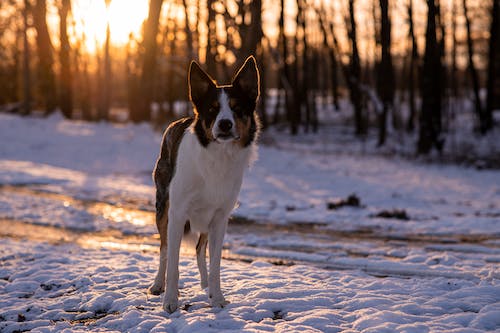Just like humans, dogs can suffer from seasonal allergies. As fall approaches, pet owners may notice changes in their dog’s behavior or health due to the allergens that become more prevalent during this time of year. Understanding the causes, recognizing the symptoms, and knowing how to manage seasonal allergies in dogs can help keep your pet comfortable and healthy throughout the season.

Causes of Seasonal Allergies in Dogs
Seasonal allergies are often triggered by environmental factors that fluctuate throughout the year. In the fall, common allergens include:
- Pollen: Certain trees, grasses, and weeds release pollen that can irritate your dog’s skin and respiratory system.
- Mold Spores: With wetter weather and decaying leaves, mold levels tend to rise in the fall, which can aggravate allergies in sensitive dogs.
- Dust Mites: Indoor allergens like dust mites can also be more prominent during cooler months when windows are closed and heating systems are in use.
- Ragweed: A major culprit during late summer and early fall, ragweed pollen can cause intense allergic reactions in dogs.
Symptoms of Seasonal Allergies in Dogs
Allergies in dogs often manifest through the skin, as opposed to sneezing and watery eyes like in humans. Watch for the following signs that your dog may be suffering from fall allergies:
- Itchy, Red Skin: Your dog may frequently scratch, lick, or bite their skin, especially around the paws, belly, and face.
- Ear Infections: Chronic ear infections or a build-up of wax could indicate allergies, especially if paired with head shaking.
- Paw Licking or Chewing: Allergens can settle on a dog’s paws, leading to excessive licking or chewing as they try to relieve the irritation.
- Runny Nose or Eyes: While less common, some dogs may have watery eyes, nasal discharge, or sneezing due to allergens.
- Hair Loss or Hot Spots: Excessive scratching can lead to bald spots or inflamed skin, known as “hot spots.”
Diagnosing Dog Allergies
If you suspect your dog is experiencing seasonal allergies, it’s essential to consult a veterinarian. A vet can help confirm the diagnosis through a variety of tests:
- Allergy Testing: Blood tests or skin tests can identify specific allergens causing the reaction.
- Physical Exam: A thorough exam can rule out other conditions that might cause similar symptoms, like flea allergies or food sensitivities.
Managing and Treating Seasonal Allergies
Once diagnosed, there are several steps you can take to help manage your dog’s seasonal allergies and provide relief:
1. Avoid Exposure to Allergens
- Wipe down your dog’s paws and coat after walks to remove pollen and allergens.
- Keep windows closed and use air purifiers to reduce indoor allergens.
- Regularly wash bedding, toys, and any fabric your dog comes into contact with.
2. Medications
- Antihistamines: Over-the-counter medications like Benadryl (with vet approval) can help alleviate mild allergy symptoms.
- Steroids: In more severe cases, your vet may prescribe corticosteroids to reduce inflammation and itching.
- Allergy Shots: For chronic or severe allergies, immunotherapy (allergy shots) can help your dog build resistance to specific allergens over time.
3. Topical Treatments
- Medicated shampoos or sprays can provide immediate relief for itchy, irritated skin. Look for products with ingredients like aloe, oatmeal, or hydrocortisone to soothe inflammation.
4. Diet and Supplements
- Omega-3 Fatty Acids: Supplements like fish oil can help improve your dog’s skin barrier and reduce inflammation.
- Hypoallergenic Diet: Some dogs benefit from switching to a hypoallergenic or limited-ingredient diet, especially if food allergies are suspected in addition to seasonal triggers.
Natural Remedies for Seasonal Allergies
If you’re looking for a more holistic approach, consider these natural remedies to help manage your dog’s seasonal allergies:
- Apple Cider Vinegar: Diluted apple cider vinegar can be used to wipe your dog’s paws or as a rinse to reduce itching.
- Coconut Oil: Rich in healthy fats, applying coconut oil to your dog’s skin or including it in their diet may improve their skin condition.
- Quercetin: Known as “nature’s Benadryl,” quercetin is a natural antioxidant that can help reduce allergic reactions in dogs.
When to See a Vet
While mild allergies can often be managed with home remedies and over-the-counter treatments, you should seek veterinary care if:
- Your dog’s symptoms are persistent or worsening.
- They develop open sores, hair loss, or recurrent ear infections.
- There’s a risk of secondary infections from excessive scratching or biting.




